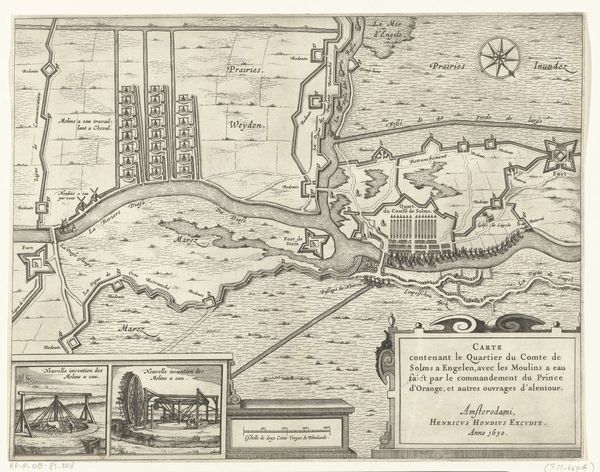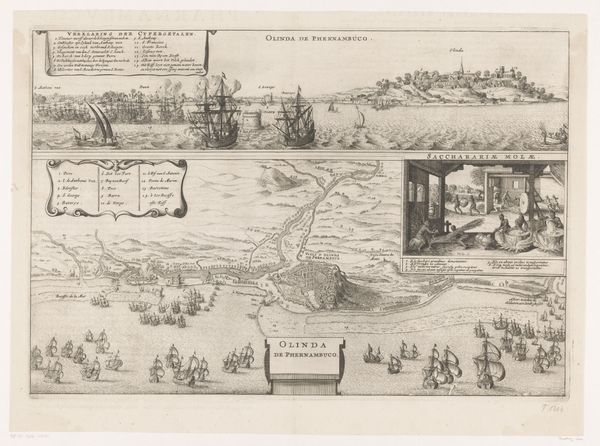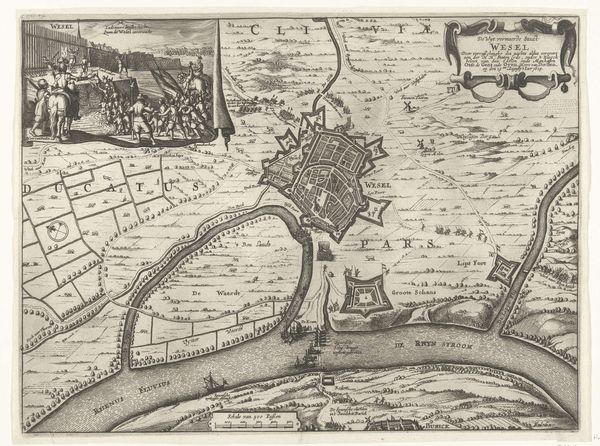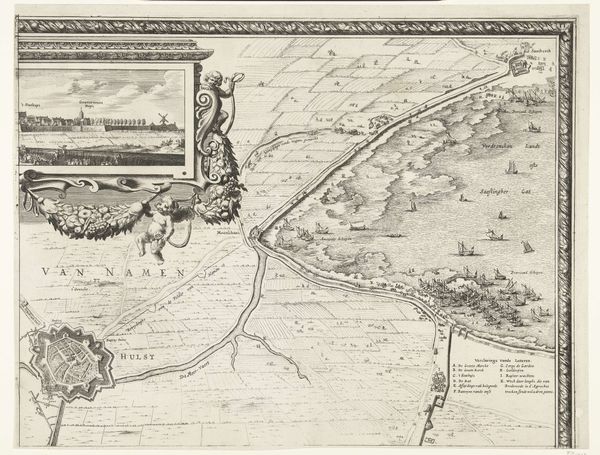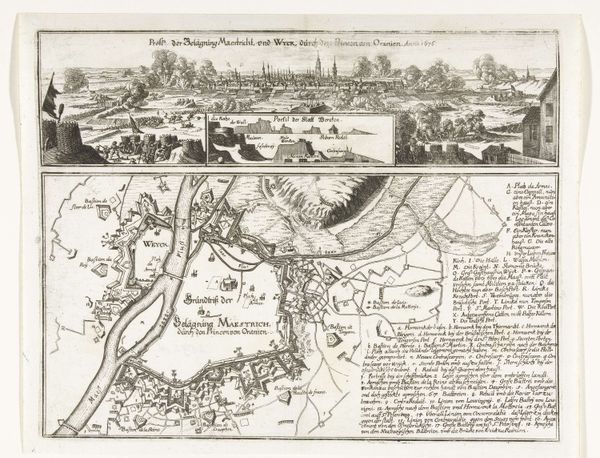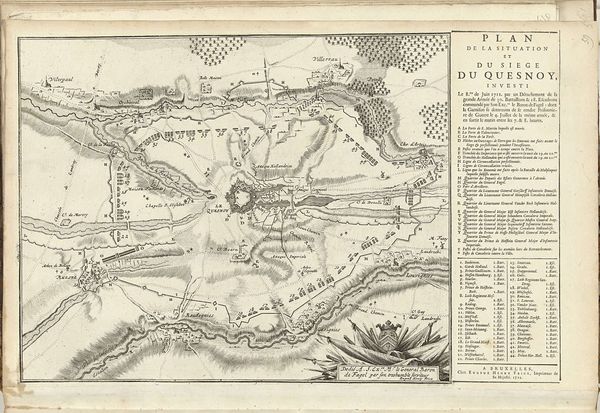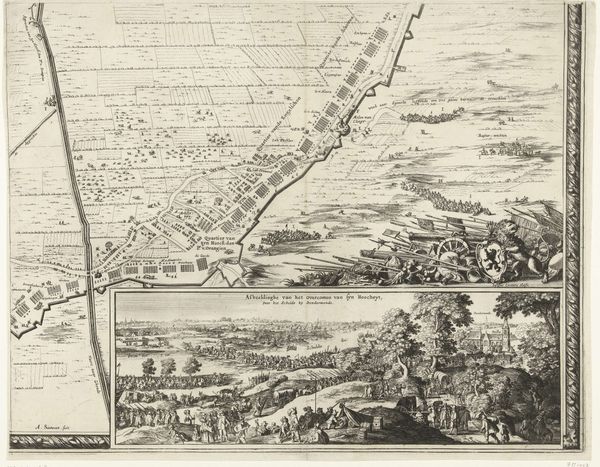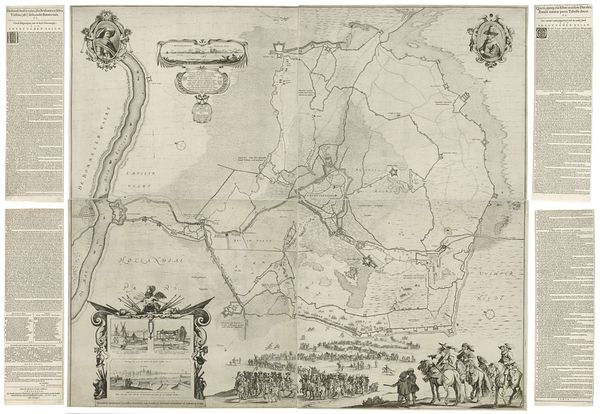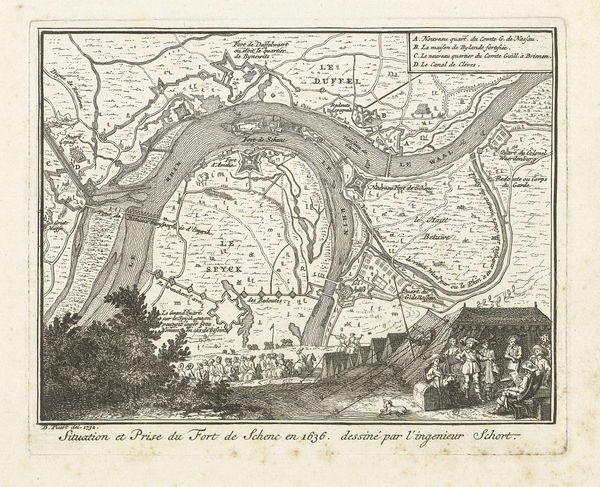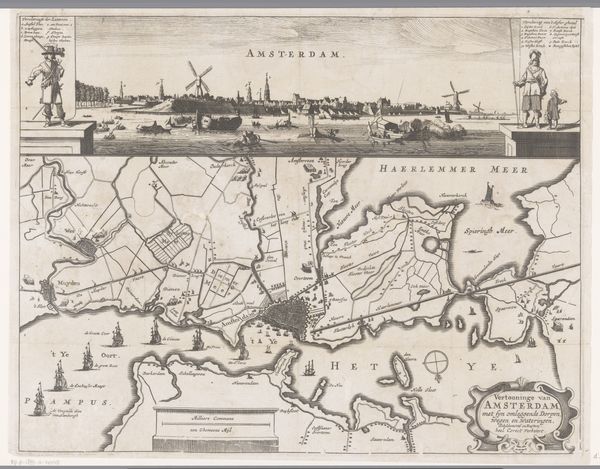
Charles XII at Bender (Aubry de La Mottraye's "Travels throughout Europe, Asia and into Part of Africa...," London, 1724, vol. II, pl. 30) 1723 - 1724
0:00
0:00
drawing, print, engraving
#
drawing
#
baroque
# print
#
landscape
#
cityscape
#
history-painting
#
engraving
Dimensions: sheet: 9 7/8 x 13 9/16 in. (25.1 x 34.4 cm)
Copyright: Public Domain
Curator: I find myself immediately drawn to the contrasting registers in this print; there is something compelling about how Aubry de La Mottraye interweaves narrative and cartography in "Charles XII at Bender." I wonder, what is your initial read of this piece? Editor: Well, initially, it feels very much like a stage set. Characters arranged neatly across the foreground like players ready for their cues. It's all so deliberately…composed. What are we looking at here precisely? Curator: De La Mottraye, in his published travelogues from around 1724, included this engraving documenting King Charles XII of Sweden's rather extended stay in Bender, which is present-day Moldova, after his defeat by Peter the Great. We have scenes from Charles’s initial encampment all the way to his more established presence alongside a detailed plan of the city itself. Editor: It is interesting to think about this as a work of propaganda. The scenes feel oddly calm given the circumstances. What meaning can we draw from the way that Charles is being presented to a British audience here? Curator: Precisely, the engraving uses familiar symbolic shorthands. See how Charles is portrayed on horseback, meeting emissaries, almost in a tableau vivant of diplomacy and power. Yet the map element anchors the image to a very specific location, blending the epic with the mundane. Note the tiny, precise renderings of buildings, that suggests a world both real and somehow, meticulously constructed for the viewer. Editor: Those small renderings lend an undeniable feeling of authority. If it is documented on a map, after all, then the power dynamic must be true. Do you see this level of staged imagery as a common characteristic for similar documents? Curator: Yes, that performative aspect of power is often visualized. But in de La Mottraye’s rendering, I think, we are seeing an attempt to solidify an image of Swedish royalty in the face of waning power, using both dramatic presentation and geographical accuracy. Editor: A clever dance, really. Balancing spectacle with the purported truth of the map. It reminds us that history, much like art, is often a constructed narrative. Curator: Indeed. And perhaps that interplay is why, even now, this image retains a strange power over us. Editor: A curious blend of hubris and cartography; quite a potent combination.
Comments
No comments
Be the first to comment and join the conversation on the ultimate creative platform.
